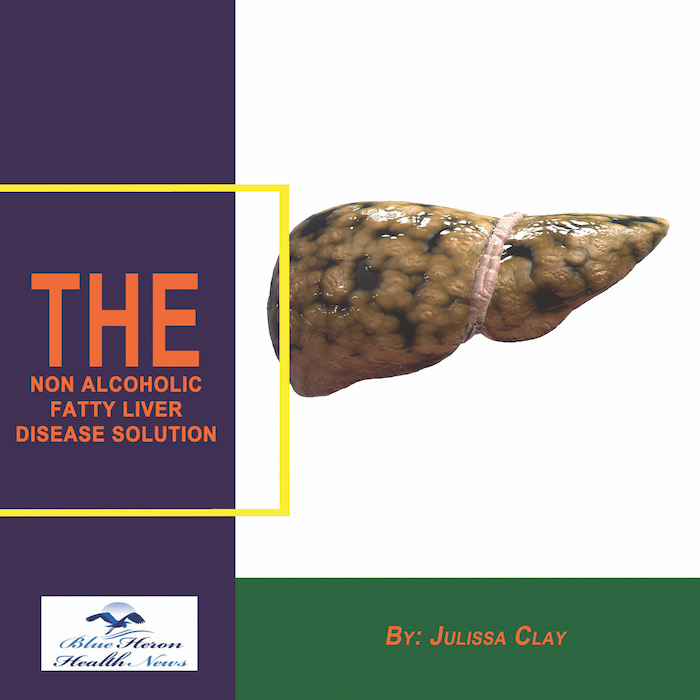
The Non Alcoholic Fatty Liver Strategy™ eBook by Julissa Clay. The program provided in this eBook is very reasonable and realistic as it neither restricts your diet miserably so that you cannot stick to the changes in diet suggested in it nor wants you to do intense exercises for many hours every week. This program helps in making big changes in your life by following a few easy-to-follow steps.
What is liver fibrosis?
Liver fibrosis is the deposition of liver scar tissue that occurs as a consequence of chronic liver injury. It develops as a consequence of the repeated efforts of the liver to heal itself after injury, for instance, due to fatty liver disease, hepatitis, alcoholism, or autoimmune disorders.
???? What Causes Fibrosis?
When the liver gets injured, it activates inflammatory cells and fibroblasts to produce collagen and other extracellular proteins.
Over time, excessive scar tissue takes the place of healthy liver cells, making it progressively harder for the liver to function efficiently.
???? How It Develops
Liver fibrosis is staged from mild to advanced:
Stage F0: No fibrosis
Stage F1–F2: Mild to moderate fibrosis
Stage F3: Advanced fibrosis (bridging fibrosis)
Stage F4: Cirrhosis (extensive scarring and distortion of liver structure)
⚠️ Symptoms
Early in fibrosis, there can be no symptoms. As it progresses:
Fatigue
Abdominal pain
Swelling (in legs or abdomen)
Jaundice (yellowing of the skin/eyes, in advanced cases)
???? How It’s Diagnosed
Blood tests: e.g., FibroTest, liver enzymes (AST, ALT), platelet count
Imaging: FibroScan (elastography), MRI, or ultrasound
Liver biopsy: Determines fibrosis severity in doubtful cases
????️ Can It Be Reversed?
Yes, early-stage fibrosis can usually be reversed if the cause is treated:
Stopping alcohol
Managing fatty liver (weight loss, diabetes control)
Treating hepatitis or autoimmune disease
Lifestyle changes and sometimes medications
???? Why It Matters
Untreated fibrosis can lead to cirrhosis, liver failure, and liver cancer. The best chance to stop or reverse damage comes with early detection.
Do you want more information on monitoring or treating fibrosis in the long term?
Fatty liver disease—especially non-alcoholic fatty liver disease (NAFLD)—can lead to liver fibrosis by a slow, gradual process driven by fat accumulation, inflammation, and scarring. This is how it usually happens:
1. Fat Buildup (Steatosis)
In the first stage, excess fat (triglycerides) is deposited in liver cells (hepatocytes).
This may be due to insulin resistance, obesity, or metabolic syndrome.
Fatty deposition itself is usually harmless, but it creates a vulnerable substrate for damage.
2. Inflammation (Non-Alcoholic Steatohepatitis – NASH)
Later on, the fat causes oxidative stress (via reactive oxygen species) and triggers:
Mitochondrial dysfunction
Endoplasmic reticulum stress
Cytokine release (inflammatory mediators like TNF-α, IL-6)
These compounds cause damage to liver cells, which results in cell death and the activation of immune cells to respond.
It is this inflammation that defines NASH.
3. Activation of Stellate Cells
Injury and inflammation activate hepatic stellate cells, normally dormant.
When activated, these cells become fibroblast-like cells that start to synthesize collagen and extracellular matrix proteins.
This marks the beginning of fibrosis (scar tissue deposition).
4. Fibrosis Progression
With scar tissue deposit accumulation:
Architecture of the liver is disrupted.
Blood flow becomes impaired.
Hepatocytes become more stressed and die, perpetuating the cycle.
Fibrosis has a tendency to begin in localized regions (e.g., in regions surrounding central veins) and gradually extend.
5. Advanced Fibrosis and Cirrhosis
As fibrosis and injury proceed, the liver becomes hard and nodular.
Cirrhosis is the advanced stage of fibrosis—when liver function is significantly impaired and risk of liver failure and cancer increases.
Fibrosis can be reversed early, but cirrhosis typically cannot.
Visual Overview of the Sequence
Simple Fatty Liver (Steatosis)
↓
Liver Cell Stress and Injury (Oxidative Stress, Cytokines)
↓
Inflammation (NASH)
↓
Stellate Cell Activation → Fibrosis Formation
↓
Fibrosis → Cirrhosis (Severe Scarring)
Why This Matters
Fibrosis—rather than fat—is the major predictor of long-term consequence in fatty liver disease. It’s highly linked with risks of:
Liver failure
Liver cancer
Cardiovascular death
Monitoring and Prevention
Fibrosis is generally silent, so one needs to:
Monitor with noninvasive tools like FibroScan or FIB-4 score.
Manage early risk factors: weight loss, regulation of blood glucose, and reduction of alcohol use.
Regularly monitor with a health professional if NASH is suspected.
Would you like a summary of how fibrosis is graded or reversed with treatment?
The Non Alcoholic Fatty Liver Strategy™ eBook by Julissa Clay. The program provided in this eBook is very reasonable and realistic as it neither restricts your diet miserably so that you cannot stick to the changes in diet suggested in it nor wants you to do intense exercises for many hours every week. This program helps in making big changes in your life by following a few easy-to-follow steps.
